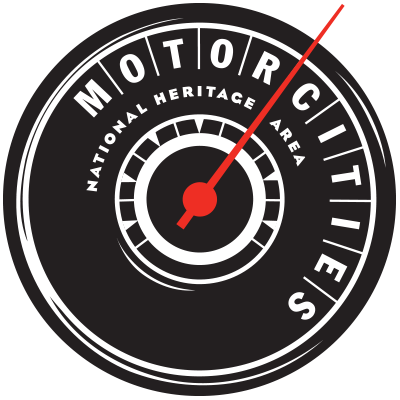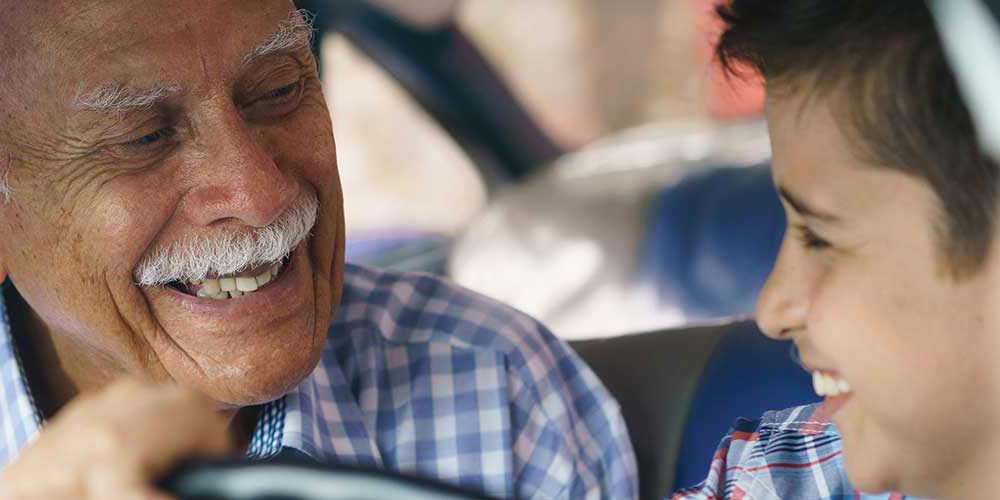by A. Wayne Ferens
Images Courtesy of the Ferens Collection
Published 7.2.2025
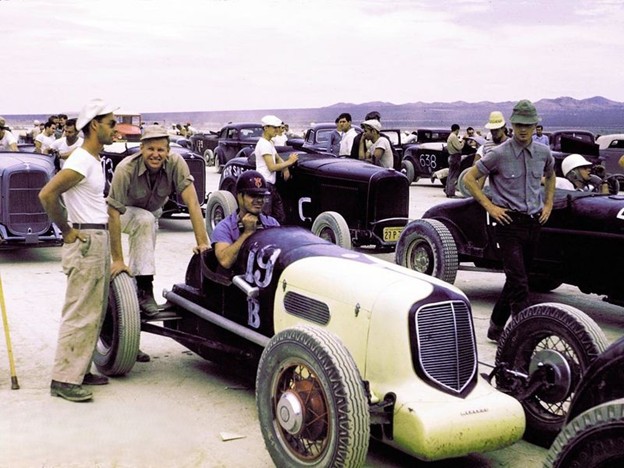 Phil Remington in his 'modified' racer with two-tone paint job at the September 1947 SCTA meet where he set the B Streamliner record at 128.38 mph. (Ferens Collection)
Phil Remington in his 'modified' racer with two-tone paint job at the September 1947 SCTA meet where he set the B Streamliner record at 128.38 mph. (Ferens Collection)
After World War II, much of what is now called “Americas Car Culture” really began in the state of California. Returning GIs, many who had acquired specialized training while in the service, were looking for ways to put those newly acquired skills to work. Americans were eager to get on with their lives, return to work, start families and travel on the open roads that were expanding across the country.
So was the case for Phil Remington (1921-2013). He grew up in Santa Monica, California and attended Santa Monica Junior College before joining the service when World War II broke out. As a founding member of the Santa Monica Low-Flyers Hot Rod Club and working at Northrop Aircraft, Remington started modifying his own cars and could design, alter and soup-up just about anything he and his friends could dream up. At 16, he modified his 1934 Ford before taking it to a California dry lake where it was clocked at 95 mph.
During the war, Remington was a B-24 flight engineer in the Pacific theater, and when the war ended, he returned home to his family and friends -- and his cars.
While his hot rods were competing on the dry lakes, at the track or just blowing the doors off the competition on Sepulveda Boulevard, Remington gained the respect and reputation as a top-notch car guy -- one who could build, tune, modify or drive with the best of them. These words of respect came from those who knew Remington, and even worked with him, like Dean Moon, Vic Edelbrock, Phil Hill, Jack Engle, Ed Meyer and Stu Hilborn.
Remington always suffered physically from a motorcycle accident when he was 20 years old, but it never stopped him from working hard and doing what he loved best. In 1957, Remington was hired by Lance Reventlow, heir to the Woolworth fortune and a professional race car driver. Reventlow wanted to build his own race car, which he named the Scarab, in California.
Reventlow leased a building on Princeton Drive in Venice, equipped it with the best tooling and fabrication machinery, and hired Phil Remington as his chief engineer. The Scarab equipped with the Chevrolet 283 cu.in. V8 engine became one of the most powerful and successful racing sports cars in the world -- but was short lived. A Scarab competing at the Continental Divide Raceway in Castle Rock, Colorado was driven to victory by Carroll Shelby, setting a new course record.
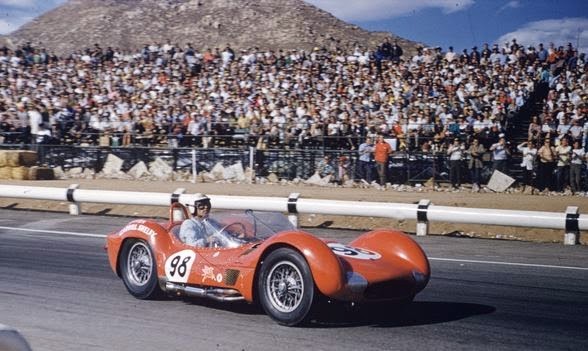 Carroll Shelby driving the Scarab at the Continental Divide Raceway in June 1960, beating Jim Hall in his Maserati Tipo "Birdcage." This would be Shelby's last race, and at season’s end, he announced his retirement due to a heart ailment. (Ferens Collection)
Carroll Shelby driving the Scarab at the Continental Divide Raceway in June 1960, beating Jim Hall in his Maserati Tipo "Birdcage." This would be Shelby's last race, and at season’s end, he announced his retirement due to a heart ailment. (Ferens Collection)
After an ill-fated entry into Formula One racing with several front engine cars and even a rear engine car with an aluminum Buick V8, Reventlow and the IRS decided to close the business and sell off the built cars. Enter Carroll Shelby ...
It was the summer of 1962 when Carroll Shelby agreed to take over the Reventlow operation at 1042 Princeton Dr. in Venice, California. This would mark the first time Phil Remington met Carroll Shelby, who offered Phil the same position he had with Scarab. Remington accepted and would put his skills to good use in ways he probably never dreamed.
Soon AC/Cobra chassis started arriving at Shelby American, Inc. (SAI) from England, along with engines and transmissions from Ford Motor Company, and orders rolled in for the new Cobra after being displayed at the New York Auto Show a few months before. Shelby started hiring more employees to assemble the street Cobras in an off-site building on Carter Street. Peter Brock was hired to create new designs, fabricate new race cars and build modified Ford engines for the Shelby racing team and potential customers. A new race team and drivers had to be in place for the 1963 FIA World Sports Car Championship season starting with the Daytona Continental in February.
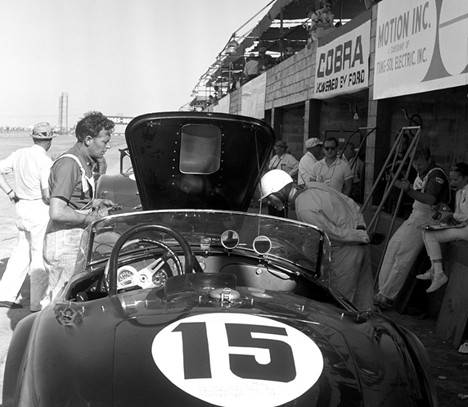 Remington at the 1963 Sebring race with the Phil Hill/Dan Gurney car. Shelby had the full support of Ford with its "deep pockets" after a Corvette finished ahead of a Ford-powered Cobra at Daytona. The winning car was (you guessed it) a Ferrari. Shelby had four Cobras entered and a team of 23 people at Sebring. These were the first 289/350 hp MKII cars prepared by Remington, and as he once said: "This is where the Ford/Ferrari War began." (Ferens Collection)
Remington at the 1963 Sebring race with the Phil Hill/Dan Gurney car. Shelby had the full support of Ford with its "deep pockets" after a Corvette finished ahead of a Ford-powered Cobra at Daytona. The winning car was (you guessed it) a Ferrari. Shelby had four Cobras entered and a team of 23 people at Sebring. These were the first 289/350 hp MKII cars prepared by Remington, and as he once said: "This is where the Ford/Ferrari War began." (Ferens Collection)
One of Shelby's strengths was hiring good people. Guys like Brock, Al Dowd, John Morton and Ken Miles. The Cobra was Shelby's idea, but he often admitted that the Cobra would never have been the success it was without Remington's practical and detailed engineering approach and his “hands on” modifications that made it a reality. It wasn't long before Remington was named Director of Research & Development.
When Ford Motor Company introduced the Mustang Fastback in 1965 with the new hi-po 289/271 hp option, Shelby, Remington and Ford saw a lot of potential in building a purpose-built race car designed for SCCA Production class competition that could be purchased for a reasonable price through a local Ford dealership. After an agreement was reached between both parties, Ford Motor Company began shipping special optioned 1965 Mustangs to Shelby's California facility. With designer Pete Brock and engineer Phil Remington, a street version was also made available, and the rest is history. Like Shelby would often say about the Cobra and the Mustang GT350: "I couldn't have done anything without Phil."
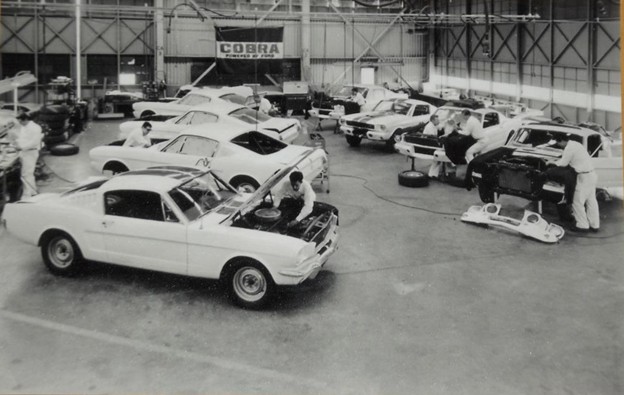 After all the engineering and design details were worked out with Shelby, Remington and Brocks suppliers - Mustang production started ramping up on the GT350 and the 350R at the Venice shop. (Ferens Collection)
After all the engineering and design details were worked out with Shelby, Remington and Brocks suppliers - Mustang production started ramping up on the GT350 and the 350R at the Venice shop. (Ferens Collection)
Soon, Shelby American and Ford approved a move to a larger facility in the LAX airport complex in June 1965. Shelby American and Ford operated there until the fall of 1967.
When Ford entered the International Motorsports arena in 1963 with the GT40 program with little success, several GT40 prototypes were shipped to Shelby at the end of the 1964 season. Within months, Remington and his team of body and chassis people switched to the new 289 engine with the focus on power, high-speed handling and stopping. Test driver and racer Ken Miles was key to diagnosing problems with the car and then getting Remington to fix them. After several months of testing and improvements, the GT40-103 #73 and GT40-104 #72 were ready for the International Motorsports war.
For the opening season on February 28, 1965, the Daytona Continental 2000-kilometer round one race started on a cool and dry Sunday with 43 cars that included SAI's two GT40 Prototypes and four Cobras all running under the scrutiny of Shelby and Remington. With Ford Motor Company and Henry Ford II looking over their shoulder, they had a lot to lose and much to gain. In the end, the Shelby American racing team dominated, taking five of the top six positions. It would be the GT40's first win with Ken Miles/Lloyd Ruby #73 car turning some of the fastest laps. The first battle had been won!
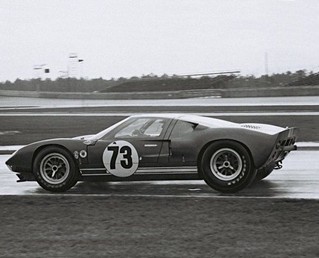 The Ford Shelby #73 racer (Ferens Collection)
The Ford Shelby #73 racer (Ferens Collection)
 Phil Remington
Phil Remington
Over the next two years, the Ford GT cars under Shelby and Remington would take two world championships away from Ferrari with two new cars, the GT40 MKII big block 427 and the J-car.
The 1967 J-car was an all-new design using advanced structural materials with a revised Engine and Foundry (E&F) 427 engine. The first three prototypes tested had handling issues that may have resulted in the deadly crash of Ken Miles in August 1966 testing the second prototype at Riverside.
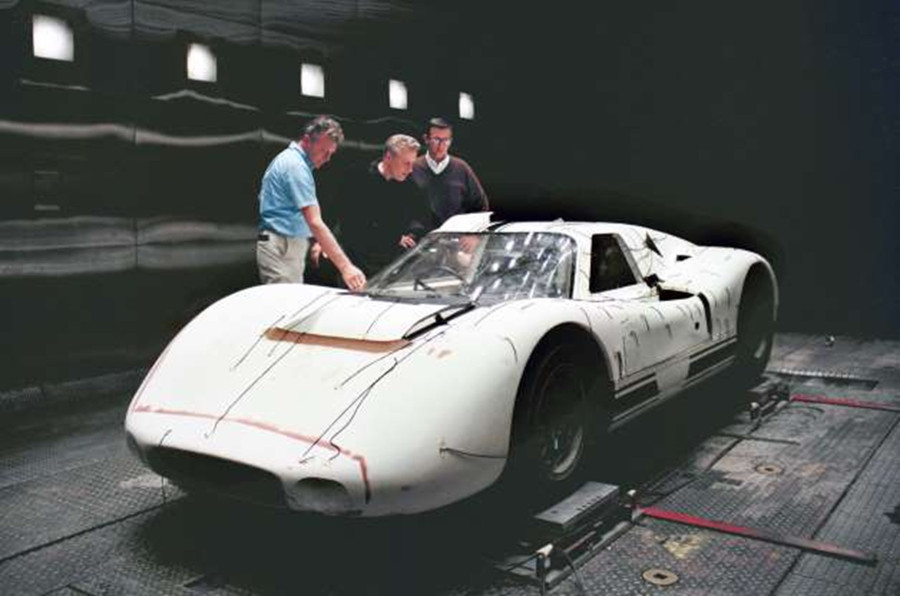 Phil Remington's input on the J-cars “aero-updates” were crucial in the final design that rocketed the MKIV to victory at Sebring and Le Mans that won the war against Ferrari. (Ferens Collection)
Phil Remington's input on the J-cars “aero-updates” were crucial in the final design that rocketed the MKIV to victory at Sebring and Le Mans that won the war against Ferrari. (Ferens Collection)
Ford immediately suspended the program until the investigation into the accident could be determined. The program was restarted with no cause found, but major revisions to the exterior design were made that included the input and expertise of Remington at Ford’s wind tunnel at the Dearborn Proving Grounds, where I met Phil for the first and only time. Remington was instrumental in the car’s final design, which was now labeled the MKIV. It was quickly assembled for its first race at the Sebring 12-hour in April 1967. The #1 GT MKIV (J-4 chassis) under Shelby and Remington driven by Andretti/McLaren scored its first win along with the second-place car, a revised GT40P-1031 MKIIB, both cars entered by Ford and managed by Shelby.
Ford Motor Company supported the Cobra program until 1965. Shelby would manage the GT40 program (priority for Ford) from 1965 through 1967 when FIA rule changes made the MKIV obsolete. Ford terminated their lease on Shelby's LAX facility and moved the Shelby Mustang GT350/500 production back to Detroit, ending it in 1970.
The glory days of Shelby, the Cobra, the Mustang GT, managing race teams around the globe and Ford Motor Company calling the shots came to an end as quickly as they started. It was quite a ride.
The following year, Remington moved to North Carolina to work for Holman & Moody, overseeing the Ford-backed Grand National stock car program that won the Daytona 500 that year. Longing to return to California, Remington and his wife moved back in 1970. He then went to work at Dan Gurney's All American Racers (AAR) in Santa Ana, California that was founded by Gurney and Carroll Shelby in 1965. Remington worked on F1 cars, GTP cars, Formula 500 racers, Can-Am, Indy 500 and IMSA cars, doing what he did best.
 Phil Remington with the AAR team, including A.J. Foyt and Dan Gurney
Phil Remington with the AAR team, including A.J. Foyt and Dan Gurney
Remington retired in 2012 from AAR due to his declining health. He passed away on February 9, 2013, less than one year after Carroll Shelby. Remington was inducted into the Motorsports Hall of Fame of America in 2019.
Bibliography:
Friedman, Dave. “Remembering The Shelby Years.” 1998.
Mills, Rinsey. “Carroll Shelby.” 2014.
Morton, John. “Inside Shelby American.” 2017.
Wyss, Wallace. “Cobra And Shelby Mustang.”
Motor Trend, August 2012.
Hot Rod, December 1966.
